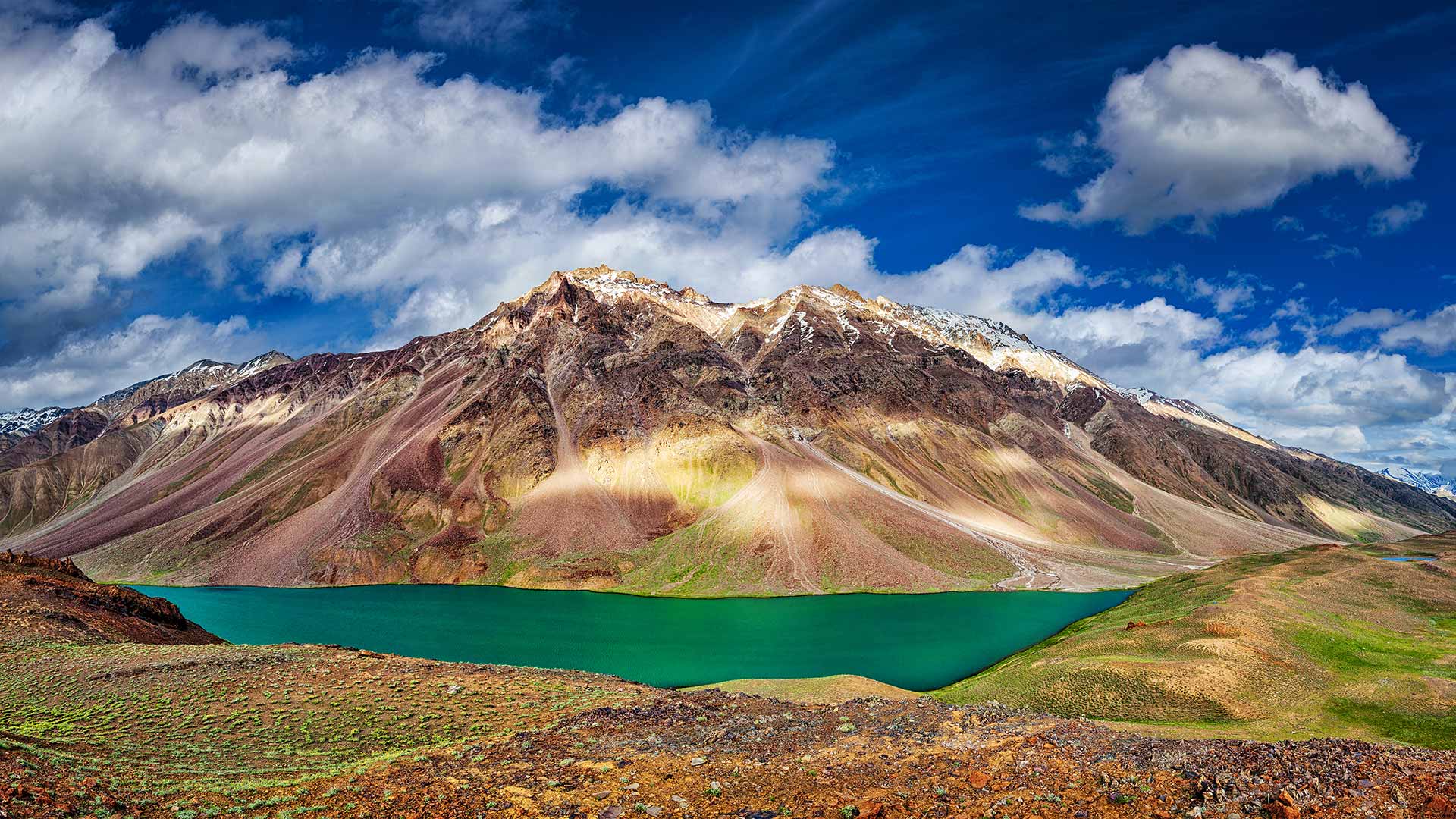秋日景色倒映于镜池中,日本长野 Autumn colors reflected in Mirror Pond (Kagami-ike), Nagano, Japan (© magicflute002/Getty images)
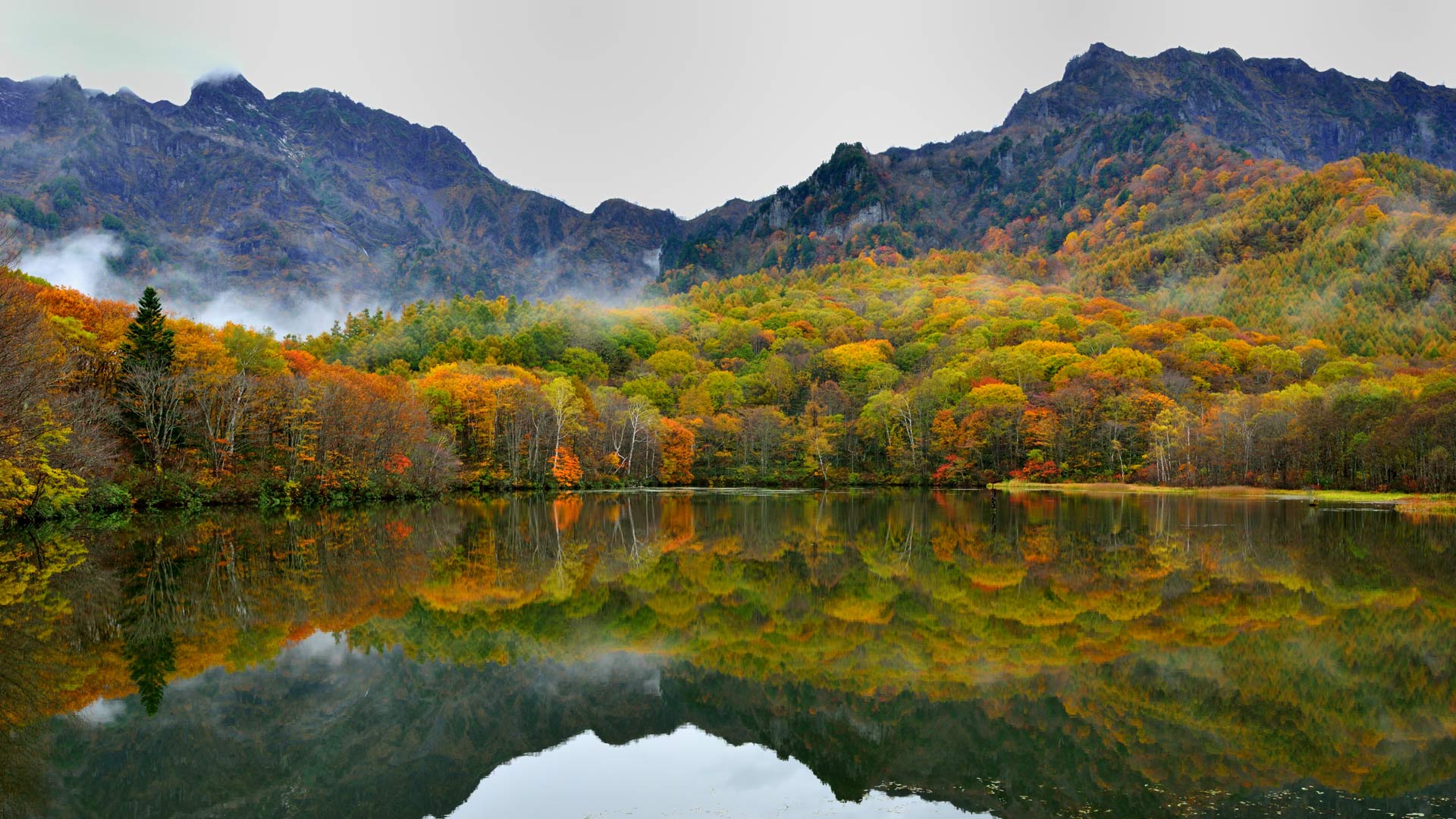
秋日景色倒映于镜池中,日本长野 Autumn colors reflected in Mirror Pond (Kagami-ike), Nagano, Japan (© magicflute002/Getty images)
Kagami-ike Pond in Nagano
Literally (Kagami means mirror), the pond projects the reflected scape of Togakushi Mountain Range and its view changes seasonally. With no wind blowing, the surface of the pond is calm with no ripples and it is just as beautiful as if it were a real mirror. Mountain Togakushi has been a place of practice for practitioners and Togakushi Ninjas.
Chapel St-Michel d'Aiguilhe, Le Puy-en-Velay, France (© Jaubert French Collection/Alamy Stock Photo)
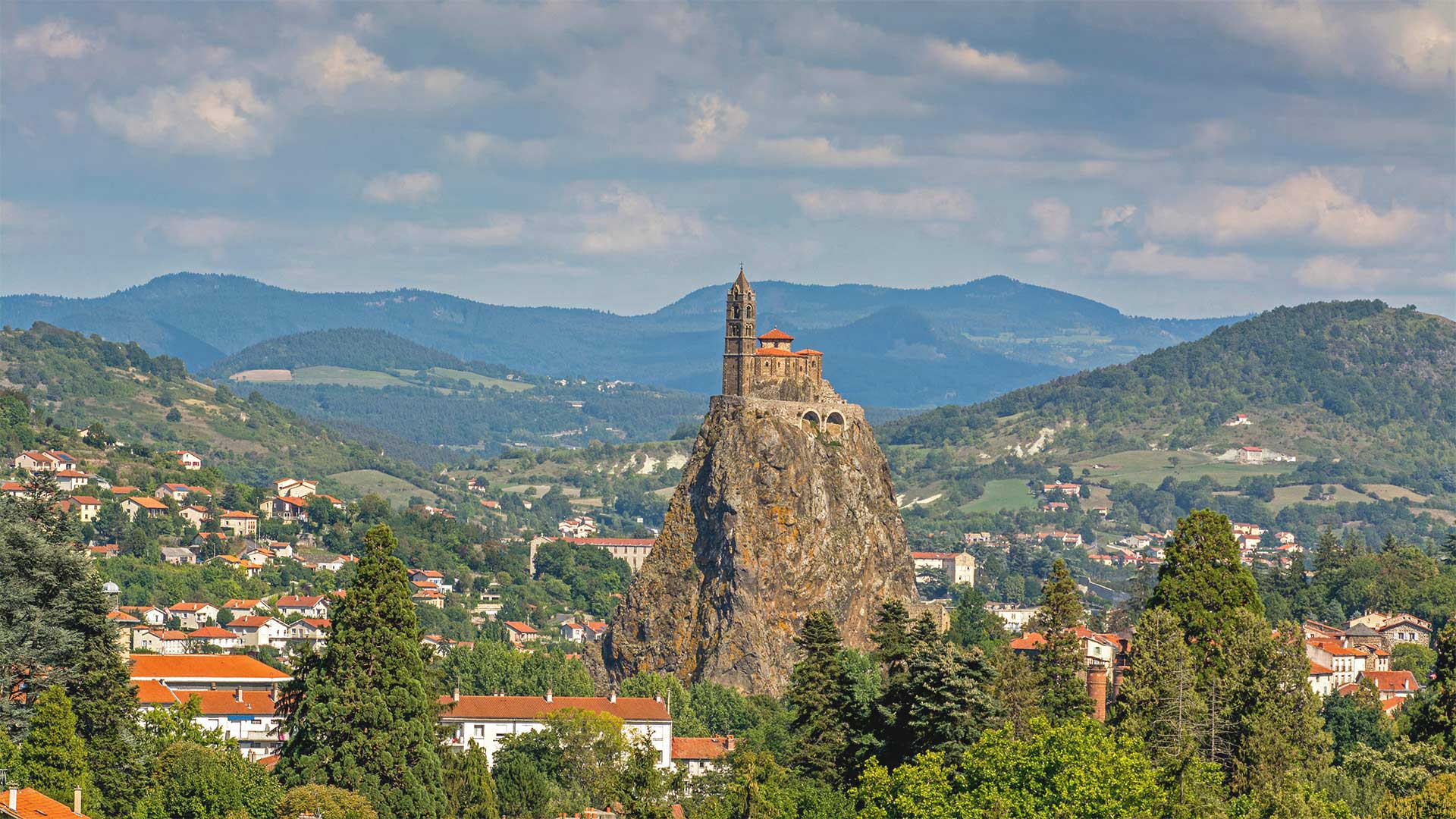
Chapel St-Michel d'Aiguilhe, Le Puy-en-Velay, France (© Jaubert French Collection/Alamy Stock Photo)
Chapel on the rock
Pace yourself—you'll need to climb 268 stone steps to reach the entrance of Chapel St-Michel d'Aiguilhe (Chapel of St. Michael of the Needle). This historic church near Le Puy-en-Velay, France, is a UNESCO World Heritage Site that attracts visitors from around the world. It was constructed in 969 by a local bishop and dedicated to Archangel Michael, the patron saint of mountaintops. Even before the chapel was built, the site had spiritual significance, as it was home to prehistoric dolmen (stone tombs) built by the Romans to honor their god Mercury.
This time of year, you don’t necessarily have to climb the stairs to get a good view. If you're lucky, you can hitch a ride from the many hot-air balloon pilots that take to the skies in early November. These enthusiasts gather in Le Puy-en-Velay each year for a festival that commemorates the anniversary of the first hot-air balloon flight.
秋日里通往卢浮宫的杜乐丽花园,法国巴黎 Jardin des Tuileries in autumn leading to the Louvre Museum in Paris, France (© Brian A. Jackson/Getty Images Plus)
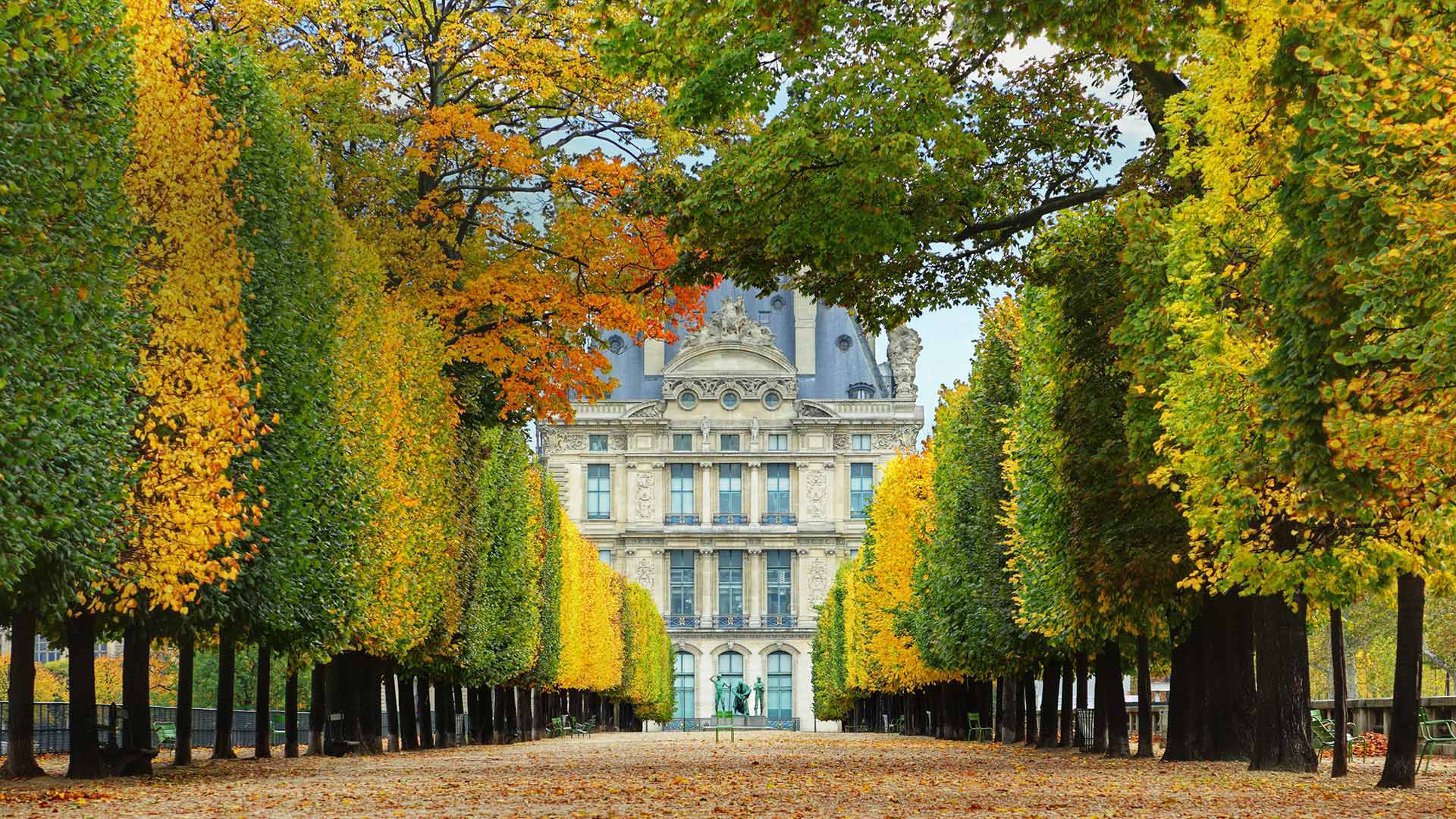
秋日里通往卢浮宫的杜乐丽花园,法国巴黎 Jardin des Tuileries in autumn leading to the Louvre Museum in Paris, France (© Brian A. Jackson/Getty Images Plus)
Paris is photo-ready this week
Today we're featuring an image of the Jardin des Tuileries and the Louvre to highlight the Paris Photo art fair happening through Sunday at the historic Grand Palais. Paris Photo is the world's largest art fair dedicated to photography. Since 1997, the mission of the fair has been 'to promote and nurture photographic creation and the galleries, publishers, and artists at its source.' Starting today around 200 exhibitors, leading galleries, and specialty publishers, along with Parisian cultural institutions, will give visitors a unique look at both historical and contemporary photographic works of art.
西班牙的藏红花 Saffron flowers in Spain (© Juan-Carlos Munoz/Minden Pictures)

西班牙的藏红花 Saffron flowers in Spain (© Juan-Carlos Munoz/Minden Pictures)
Saffron in bloom
It's harvest time for saffron, the precious seasoning that's mostly grown in Iran, but used in cuisines around the world. Saffron is derived from the saffron crocus, an autumn-flowering plant with purple petals as richly hued as the vivid crimson stigmas (called 'threads') in the center of the bloom. These threads are carefully extracted by hand with tweezers and dried before they're used for cooking. Each flower comes with just three threads, and it takes a lot of them—roughly 75,000 crocuses will yield just one pound of saffron. The entire harvest can last only about a week or two, because that's the short life of the saffron crocus bloom.
This time of year, the small Spanish town of Consuegra celebrates the end of the harvest season. This is home to some of Spain's best-preserved windmills, which traditionally milled the wheat grown in the region. During Consuegra's Festival de la Rosa del Azafrán (Festival of the Rose of Saffron) locals dress in traditional clothing and ceremonially grind some wheat from one of the old windmills. But feasting on regional cuisine is the highlight of the festival, and saffron is at the center of activities, complete with saffron extracting competition. The contest honors the difficulty of picking the threads from the flower.
软木橡树林 Cork tree forest (© Andrés M. Domínguez/Minden)
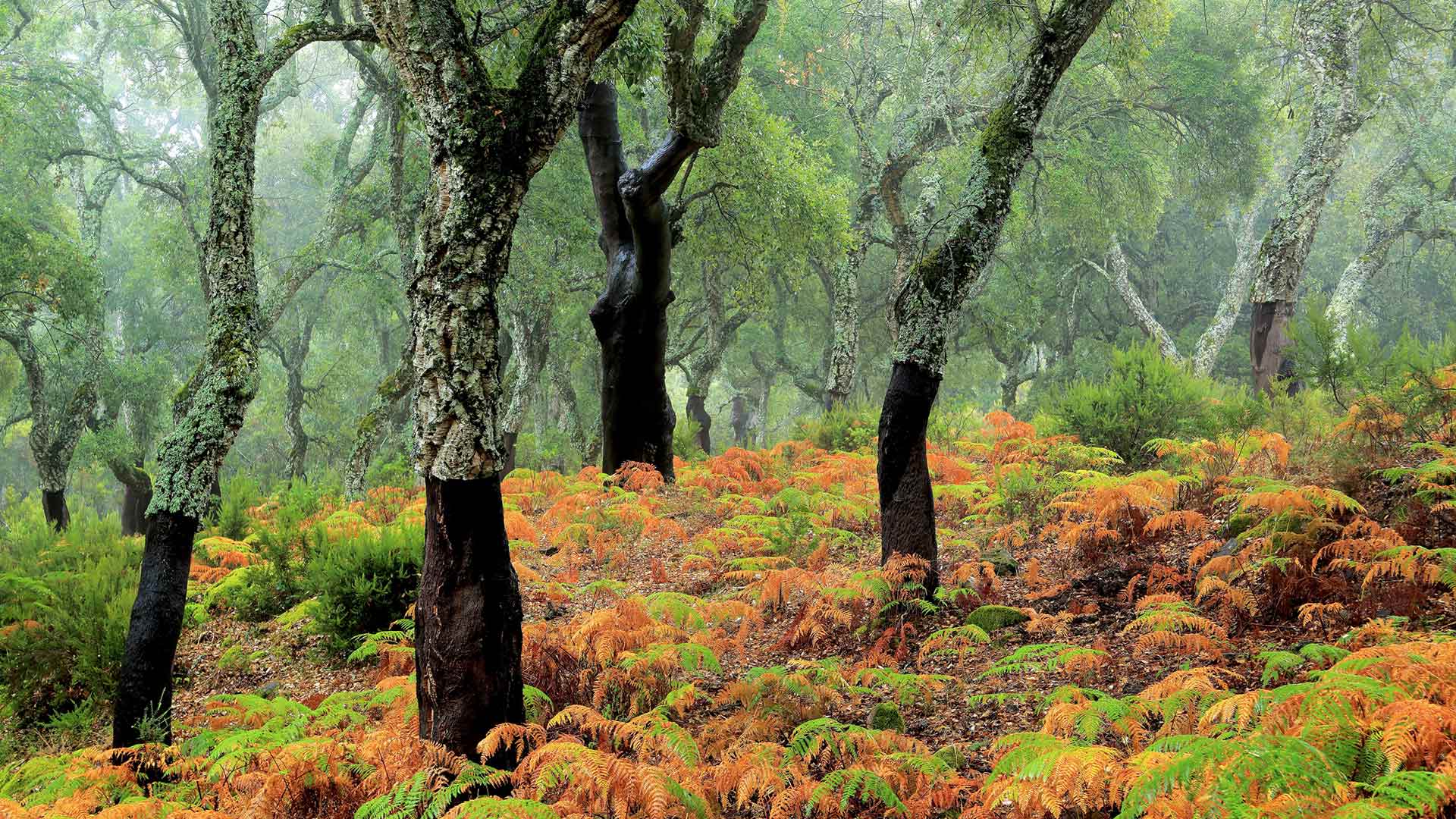
软木橡树林 Cork tree forest (© Andrés M. Domínguez/Minden)
The largest cork reserve on the Iberian Peninsula
Los Alcornocales is one of the largest natural parks in Spain. It is located between the provinces of Cadiz and Malaga, occupies an area of almost 168,000 hectares and offers a variety of landscapes with which few places can compete; from the steep, narrow ravines where dozens of streams are born, to the thick mist-covered forests that we can see in our photograph today. Here you will find the largest population of corkscrews in the Iberian Peninsula, an indigenous tree that begins to be usable when it turns 35 or 40 years old.
This place also has an exciting history. Traces from several archeological sites tell us that it served as a refuge for the Neandertal man. And you can visit close to 50 caves dating back to the Bronze Age, such as the Tagus of The Figures, considered the Sistine chapel of rock art. In addition, there are several megalithic monuments and remnants of later civilizations, ranging from Iberian peoples to Arabs, Phoenicians and Romans.
喜马拉雅山脉的钱德拉塔尔湖,印度 (© f9photos/Getty Images Plus)
Workers cleaning the clock face of Big Ben in London, England, for the end of Daylight Saving Time (© Reuters)
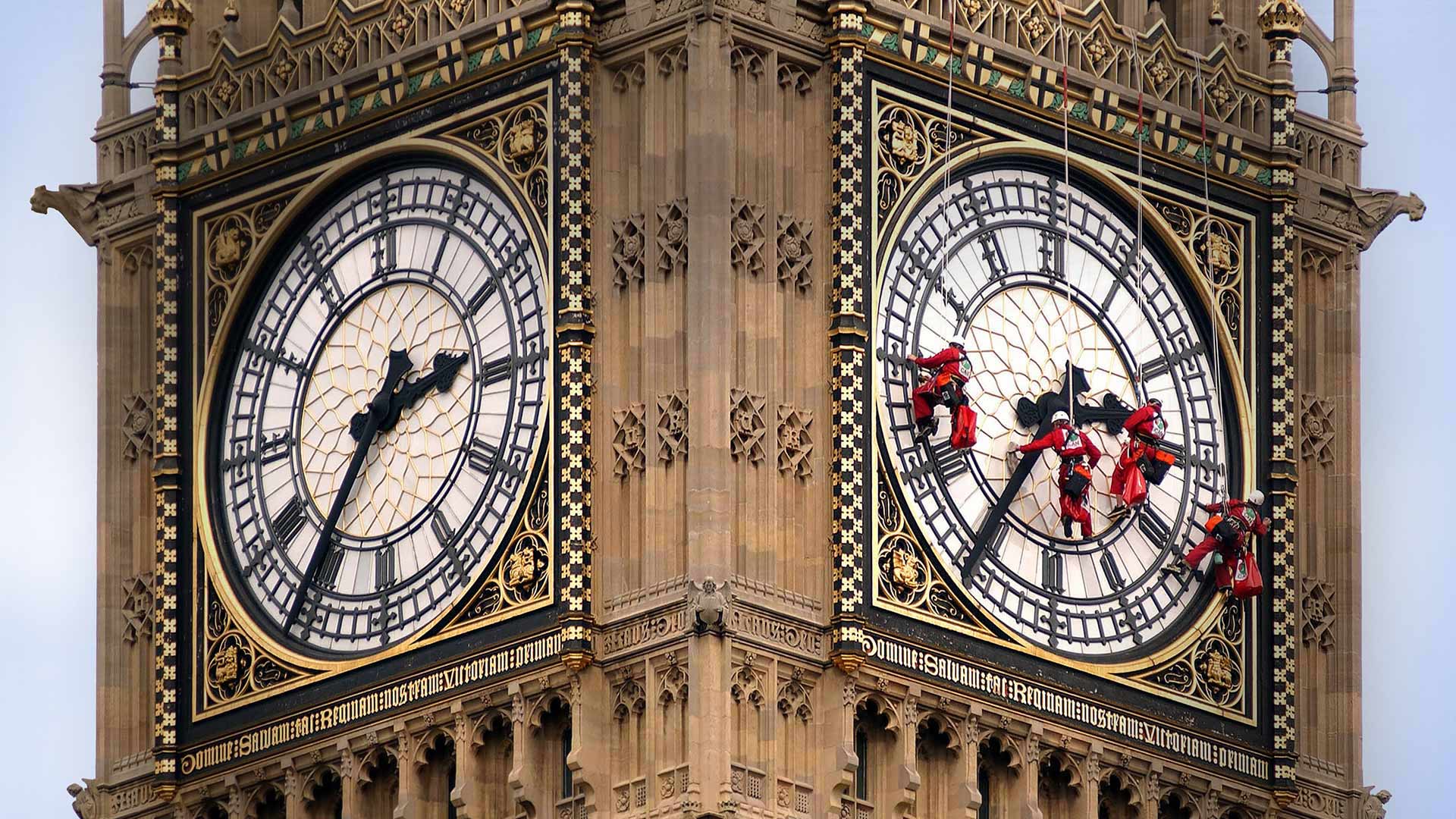
Workers cleaning the clock face of Big Ben in London, England, for the end of Daylight Saving Time (© Reuters)
It's time to fall back
While today's image may look like a scene from the Doctor Who TV show, its actually an image of workers maintaining Big Ben's clock face. But like The Doctor, the show's main character, today we're all time travelers. This morning we fell back (or will fall back for night owls and insomniacs reading this before 2 AM) in time an hour for the end of Daylight Saving Time. And like changes to Doctor Who, this change isn't without controversy. Since the 1970s, many different studies have tried to quantify the advantages or disadvantages that come with falling back and springing forward, as yet there's no definitive answer on if the scheme is better or worse for us. Have an opinion on if Daylight Saving Time should be kept or scraped? To participate in our completely unscientific poll, scroll down, or go to the homepage and then scroll down until you see the poll.
代阿布洛峰州立公园,加利福尼亚 Mount Diablo State Park, California (© Yuval Helfman/Getty Images)
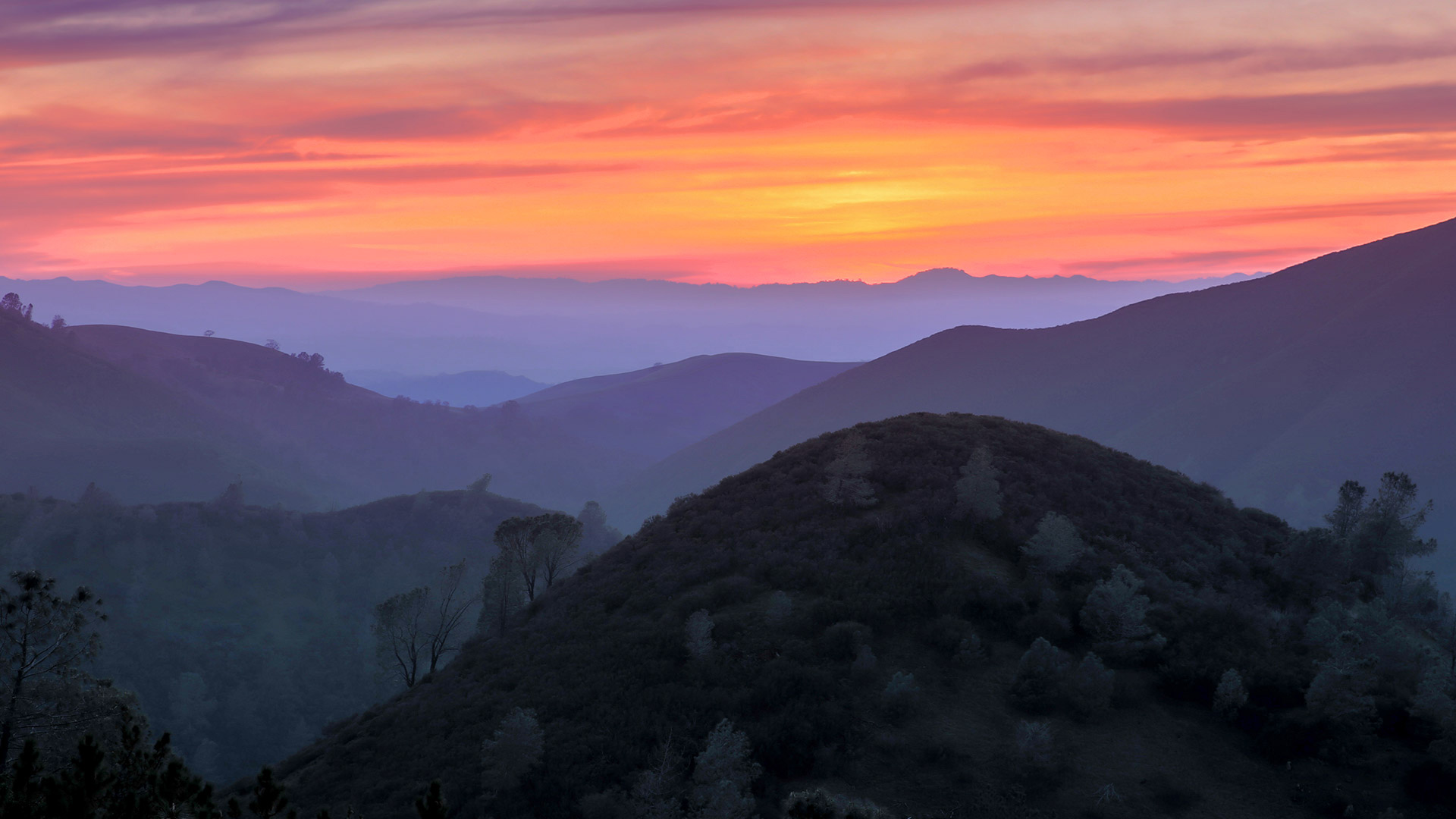
代阿布洛峰州立公园,加利福尼亚 Mount Diablo State Park, California (© Yuval Helfman/Getty Images)
Welcome to California
These are the peaks of Mount Diablo, part of the Diablo mountain range in the eastern part of the San Francisco Bay Area. On a clear day, you can see all the way to the Sierras from here. In fact, this is one of the best viewsheds in the Bay Area, which is a feat, since the peaks are comparatively low for the region. While Mount Diablo may tempt you to take in the scenery or hike in the surrounding state park, the area offers compelling stories from American history as well.
November 4, 1841, marks the day when a group of about 70 people, led by 22-year-old John Bidwell, finally reached the West Coast after setting out from Missouri. This was the first time a wagon train used part of the newly established California Trail to emigrate to California. The trip was grueling, covering more than 2,000 miles. The wagons traveled at a pace of just 15 miles per day, pulled by oxen, horses, or mules. The journey required traversing part of the Oregon Trail and crossing such daunting obstacles as the desert areas around the Great Salt Lake and the steep slopes of the Sierra Nevada mountains. After five months, the wagon train arrived at the ranch of John Marsh near Mount Diablo. The successful journey helped pave the way for expansion to the American West and marked the route for future wagon trains during the California Gold Rush.
